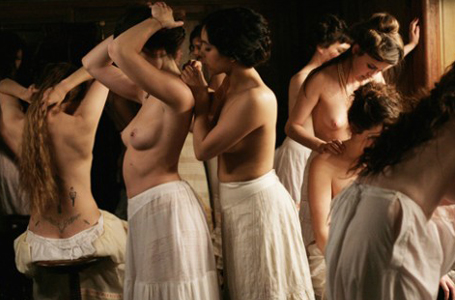
Made in 1998, Hou's classic depicted life in the flower houses of Shanghai at the turn of the 20th century, looking at the courtly dance between the girls and their patrons, the complex social niceties that masked the very simple question of whether a landed man would take a prostitute as a minor wife. Lingering over period details, each scene was filmed in a single long take so you could almost drink in the atmosphere of a place and way of life that no longer exists.
In House of Pleasures, the action is set within a similarly respectable Parisian establishment in 1899 and 1900. Two years before the 20th century, besieged by increasing rents, the spread of venereal disease, the advent of the Metro, and modern science (and its approach to humanity and human relations), the girls of the Apollonide ask the same question of their clients while knowing full well the impossibility of being bought out of their debts and contracts.
Bonello's focus is entirely the reverse of Hou's – the story is told from the point of view of the prostitutes. Where Hou concentrates his action on the mahjong games in the bourdoirs of the Shanghai flower houses, Bonello is keen to show us the nudity and sad sexual games they have to play in the richly draped servicing rooms as well as the austerity and peeling paint in the rooms the prostitutes live in after hours.
The effect is at once the same yet completely different. While the melancholy and futility of existence was smothered by the rich, boisterous exteriors in Hou's film, there is no similar balm to ameliorate the overhanging emptiness and tragedy that permeates House of Pleasures.












 列印版本
列印版本















